Pyrenomycetes
Pyrenomycetes (Sordariomycetes and similar fungi) in temperate deciduous forests of southern and western Norway
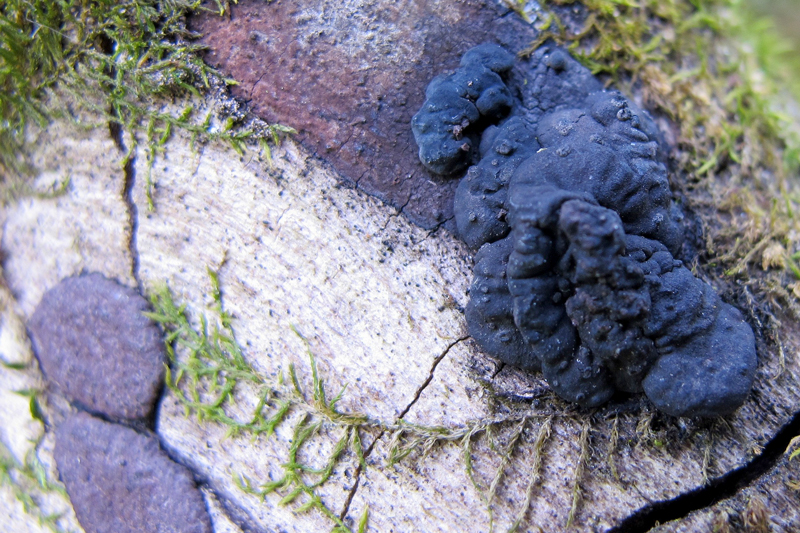 Chlorostroma. Foto © John Bjarne Jordal.
Chlorostroma. Foto © John Bjarne Jordal.
Pyrenomycetes* are fungi with perithecia, small flask-shaped fruit-bodies that contain asci and they constitute a large part of the sac-fungi or Ascomycota. This species rich group of mainly decomposers, plant, animal and fungal parasites are ecologically important but little known in Norway and may contain many new species and many species which should be considered for red-listing. In the project funded by Artsdatabanken for 2013 -2015 we focus on species associated with dead wood and bark in noble deciduous forest with elm, ash, maple, linden, oak, hazel and beech.
*Pyrenomycetes are ascomycetes with perithecia; pear-shaped fruitbodies usually smaller than 1 mm with an apical pore. Many pyrenomycetes also have a stroma, a much larger structure embedding the perithecia in fungal tissue. In a narrow sense pyrenomycetes encompass the class Sordariomycetes, but also some species of Dothideomycetes, Chaetothyriomycetidae (Eurotiomycetes) and Ostropales (Lecanoromycetes) with superficially similar fruiting bodies will be collected by us.
Xylaria hypoxylon
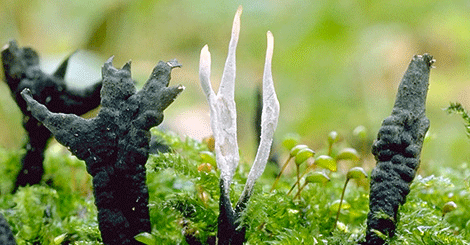 Xylaria hypoxylon with sexual and asexual stages. Photo © Jens H. Petersen
Xylaria hypoxylon with sexual and asexual stages. Photo © Jens H. Petersen
The sexual spores are produced in perithecia embedded in the stroma. The openings (ostioles) of the perithecia are placed on top of small papilla which protrude from the surface. In this and many other species the contours of the perithecia are partly visible on the surface but other species have a completely flat upper surface, only penetrated by the small ostioles.
In Xylaria hypoxylon the asexual stage is formed on the upper part of young stromata that become white and dusty from asexual spores (conidia). Later perithecia are formed in the same stromata and the top part partly withers away.
Annulohypoxylon multiforme
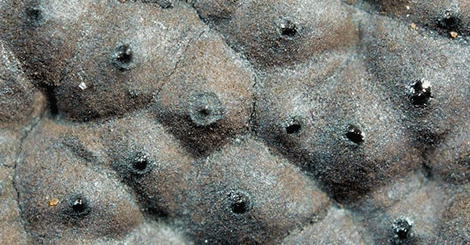 Annulohypoxylon multiforme Photo © Jens H. Petersen
Annulohypoxylon multiforme Photo © Jens H. Petersen
Annulohypoxylon multiforme has a stroma with black interior composed of only fungal hyphae, whilst many other species have a stroma (also termed pseudostroma) that is a mixture of fungal cells (hyphae) and wood cells.
Cosmospora episphaeria
 Cosmospora episphaeria. Photo © Jens H. Petersen
Cosmospora episphaeria. Photo © Jens H. Petersen
Cosmospora episphaeria is an example of a species without a stroma (with free perithecia). The perithecia are red and has a soft wall that tends to collapse from the sides when dried. It grows on top of old stromatic pyrenomycetes, while many other species with free perithecia are saprobic on dead wood or grow on other substrata.
Pseudohalonectria lutea
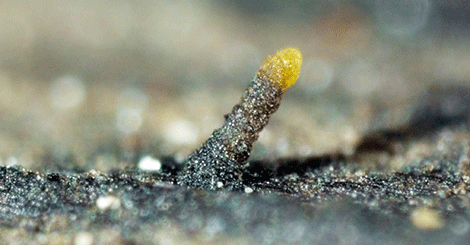 Pseudohalonectria lutea. Photo © Jens H. Petersen
Pseudohalonectria lutea. Photo © Jens H. Petersen
Pseudohalonectria lutea has a long neck on top of the immersed perithecium, which points up from the substratum. The ostiole is placed on top of the long perithecial neck. P. lutea grows on submerged dead wood in streams and brooks.
Valsa intermedia
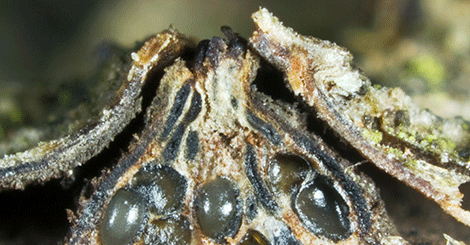 Valsa intermedia growing on Quercus. Photo © Jens H. Petersen
Valsa intermedia growing on Quercus. Photo © Jens H. Petersen
In many species the perithecia are aggregated, and a special case of aggregation named after the genus Valsa is called valsoid configuration. The perithecia have long necks and the ostioles converge in the middle, often on a small disk composed of fungal cells.